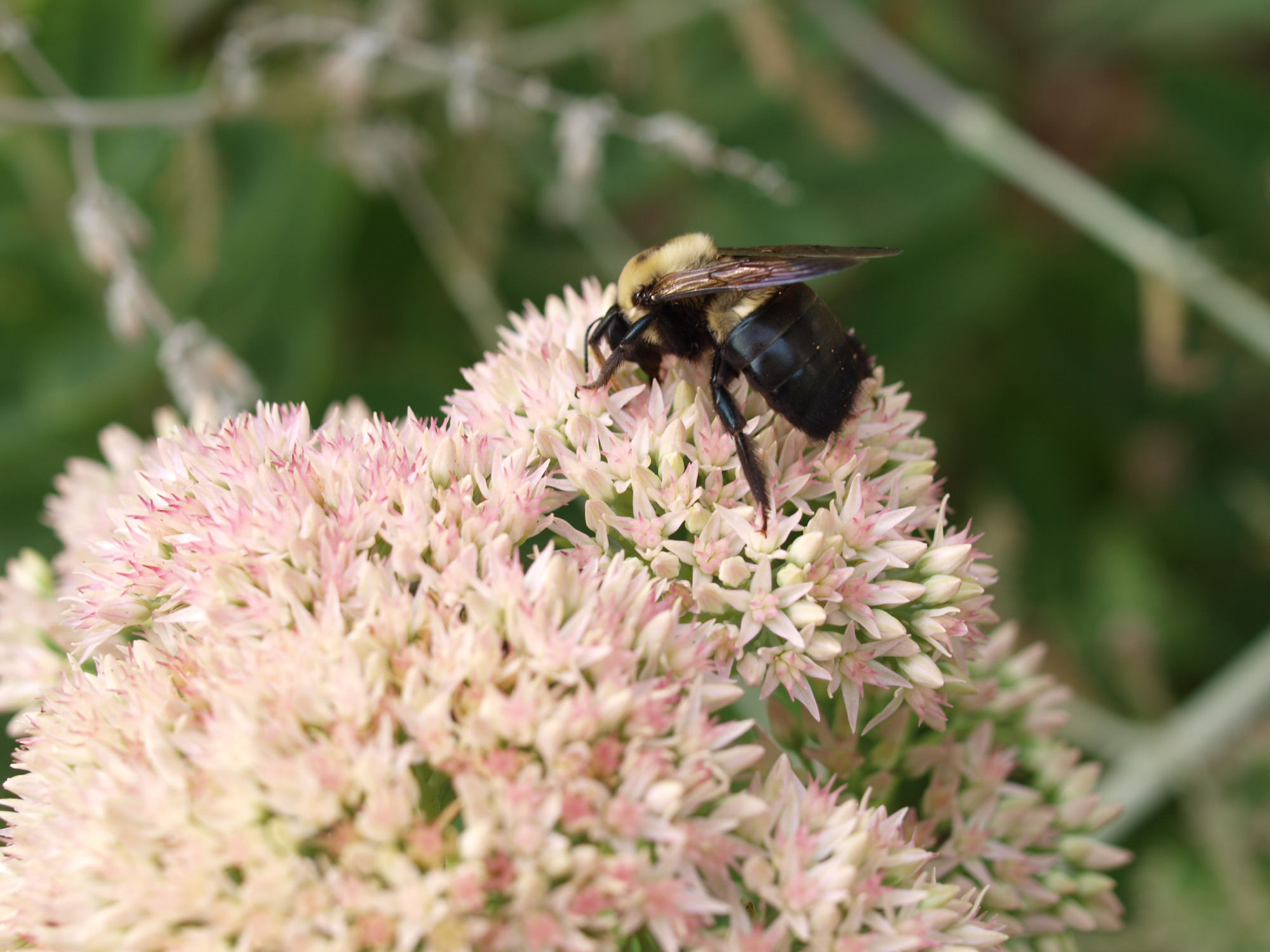

Carpenter bees are some of the largest bees native to the US. They resemble bumblebees, but you’ll be able to tell them apart because they will burrow in fences, telephone poles, dead trees, and other types of wood. These insects are major pollinators, but they’ve earned a bit of a bad rap thanks to the damage they do to human structures.
If these bees have decided to call your home their home, it can be tempting to simply exterminate them, but you should take a more peaceful route. Because of how hugely beneficial they are to local ecosystems, many beekeepers say it’s important to safely move them instead.
Where to find carpenter bees and how to identify them
Unlike honeybees, carpenter bees do not live in large groups. They tend to make individual nests in which to lay their eggs and nurture new generations. Although there are some ground-dwelling species, most do what their name suggests: they burrow into soft, untreated wood like redwood, cedar, and pine.
The female bees start crafting these nests in the spring, laying their eggs inside for the males to visit and fertilize. The hatchlings emerge in late summer and leave the nests in search of flowers, before spending the winter inside the nest tunnels. You can identify a carpenter bee’s nest by the sawdust around or below it.
[Related: City gardens are abuzz with imperiled native bees]
The bees themselves are generally larger than bumblebees, often between a half-inch and 1 inch long, and do not have yellow stripes. You’re more likely to see the male bees, especially during mating season because they’re extremely territorial and hover around the nests. They can be intimidating, but they have no stingers and are unlikely to hurt you—the aggressive buzzing is all an act to protect their nests. Female carpenter bees, on the other hand, do have stingers, but won’t attack unless confronted directly.
Because they create tunnels, and may come back to them year after year, these bees can cause structural damage to load-bearing fence posts and other wooden constructions. They may also cause indirect damage, as woodpeckers like to go after carpenter bee larvae and can splinter the wood in their search for food.
How to safely get rid of carpenter bees
Despite the issues carpenter bees can cause, they are extremely effective pollinators. Nick Hoefly, a beekeeper at Astor Apiaries in Queens, New York, says that thanks to their size, these hefty bugs are excellent “buzz” pollinators. “This is a type of pollination where the insect vibrates the blossom to dislodge pollen, allowing it to fall onto the female parts of the plant,” he says. “Many vegetables and fruits, including tomatoes and some berries, rely on this type of pollination.”
Use almond, citrus, or another scented oil
That’s why it’s best to get rid of carpenter bees without hurting them. Hoefly recommends applying a drop of almond or citrus oil inside any nest holes you find. Since they don’t like the smell, they will most likely vacate and search elsewhere for a less-stinky place to build a nest. After they leave, you’ll need to fill the holes with wood putty or steel wool. If you have wood the bees haven’t found yet, take some time to sand it down, wipe away any excess sawdust with a wet sponge, and then paint it. Carpenter bees are attracted to unfinished wood.
Install wind chimes
If you have no interest in keeping these pollinators around, Hoefly suggests using wind chimes. The bees don’t like the noise and the constant jangling might convince them to seek other accommodations. If you’ve been reading a lot about how to get rid of carpenter bees, you may have seen suggestions involving loud music. Although doing so may bother the bees, it may also bother you (and your neighbors). Wind chimes are a more peaceful option that you’ll never have to turn on or off.
Give them a home of their own
But if you do want them to stay, you can provide homes specifically for them. This will keep them around, pollinating your garden and local plants. You can place simple blocks of wood around that you wouldn’t mind them burrowing into, but Bruce Shriver, a beekeeper at the Gowanus Apiary in Brooklyn, New York, prefers “insect hotel-style habitats.”
You can find these at any home goods or hardware store or even make them yourself out of scrap wood and naturally hollow material. “As long as the habitat includes a block of soft wood in addition to the reeds, bamboo, straw, and other materials… it should serve well as a decent carpenter bee habitat,” Shriver says. You’ll have all the benefits of these super-pollinators without them hovering around and burrowing into your fences.
This story has been updated. It was originally published on September 2, 2021.
